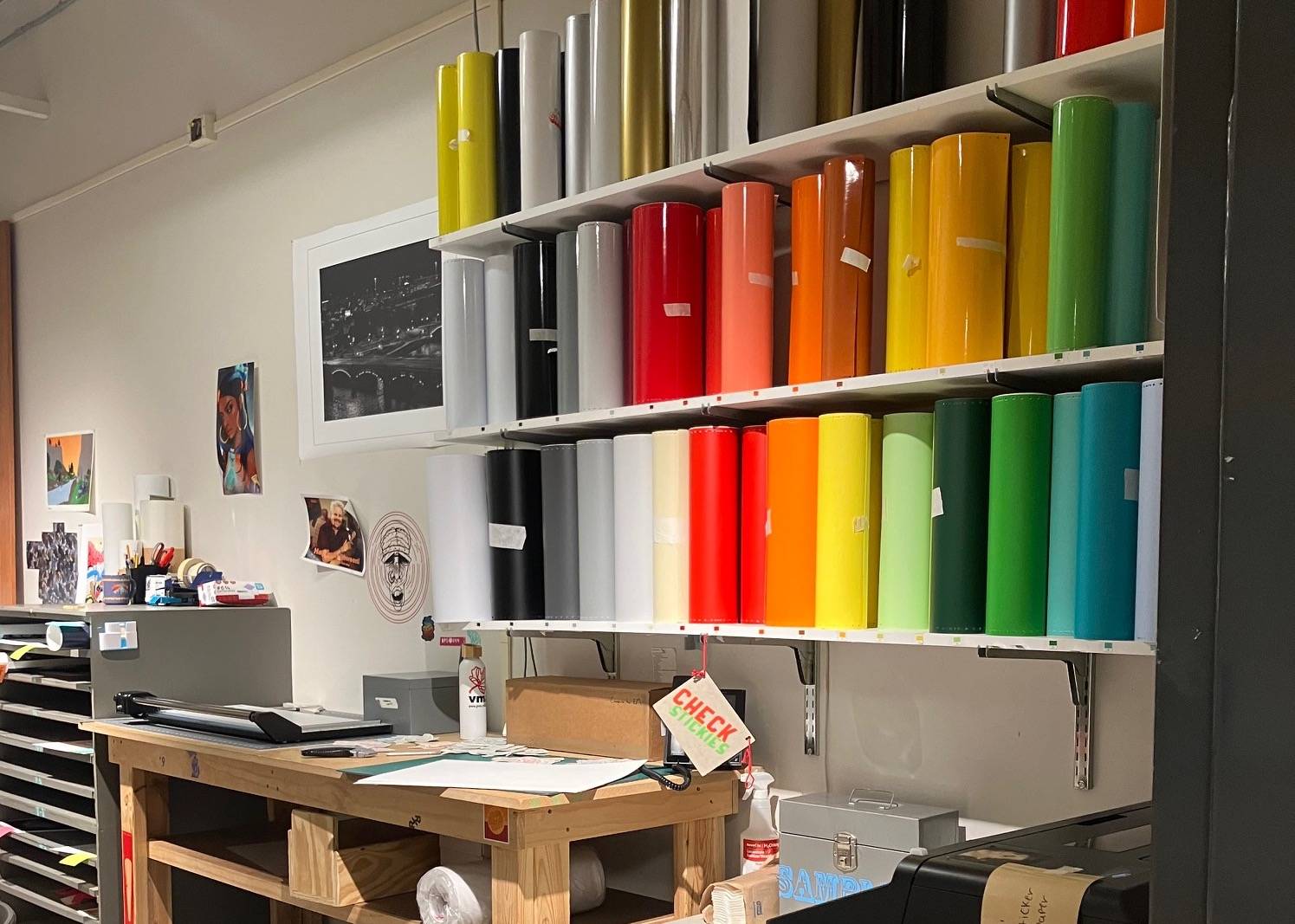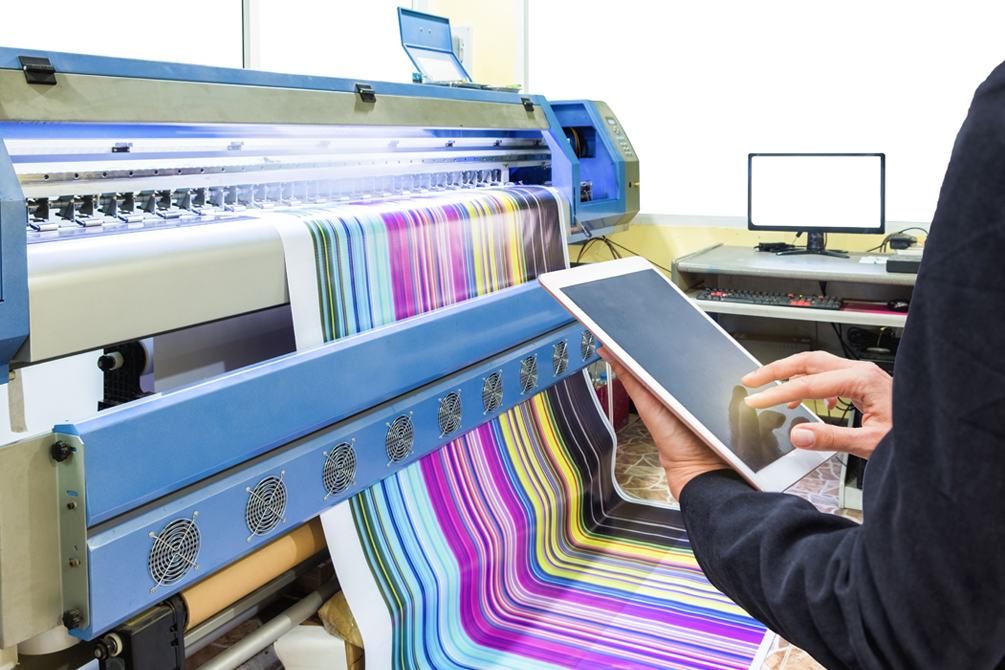The Ultimate Overview to Making Use Of Printing Solutions for Custom Art Prints
Guiding through the world of custom-made art prints calls for a clear understanding of various printing services. Musicians should take into consideration aspects such as printing methods and materials to achieve the preferred end result. Each decision, from art work prep work to shade calibration, plays a crucial role in the end product. As they check out these aspects, musicians can reveal the capacity for their work to get in touch with audiences in a meaningful method. What actions can they take to assure their prints stand apart?
Comprehending Various Kinds of Printing Solutions
Several individuals might neglect the details of printing solutions, comprehending the numerous kinds available is vital for anyone looking to create customized art prints. One of the most common kinds consist of electronic printing, offset printing, and screen printing. Digital printing is favored for its quick turnaround and ability to produce high-grade images directly from electronic data, making it perfect for little runs. In comparison, countered printing deals premium image high quality and is cost-efficient for bigger amounts, making use of plates to transfer ink onto paper. Screen printing, usually made use of for textiles and marketing things, entails pushing ink via a mesh display, permitting dynamic colors and appearances. Each technique has its one-of-a-kind advantages and constraints, making it crucial for musicians and designers to evaluate their certain demands, such as amount, preferred quality, and spending plan, before selecting a printing solution that aligns with their imaginative vision.
Picking the Right Products for Your Prints
Selecting the ideal materials is vital for achieving high-quality custom art prints. Comprehending the different kinds of paper and the value of ink high quality can considerably influence the outcome. Musicians must consider these elements to ensure their vision is properly represented in the printed piece.
Paper Types Explained
Choosing the right paper kind is crucial for achieving the wanted visual and toughness in personalized art prints. Various alternatives exist, each offering distinctive qualities. As an example, glossy paper enhances shade vibrancy and information, making it ideal for photography prints. On the other hand, matte paper gives a softer finish, which is better for artwork that requires nuance and structure. Great art paper, typically made from cotton or alpha cellulose, uses historical top quality and is suitable for reproducing detailed information in paintings (Print Shop Near Me). Furthermore, specialty documents, such as watercolor or canvas, can include unique aesthetic effects. Eventually, selecting the appropriate paper kind will considerably influence the last discussion, ensuring that the artwork is both resilient and aesthetically enticing
Ink Quality Issues
Ink top quality plays a necessary duty in the general success of customized art prints. High-grade inks guarantee vibrant colors, sharp details, and durability, which are crucial for showcasing imaginative job. When picking printing solutions, artists ought to think about pigment-based inks over dye-based choices, as they use far better discolor resistance and shade security. In addition, the selection of ink must enhance the picked paper kind, improving the print's aesthetic influence. Ecological variables, such as humidity and temperature level, can additionally impact ink performance; therefore, musicians need to make inquiries about ink formulations that resist these components. Eventually, purchasing remarkable ink high quality can elevate the end product, ensuring that the art print stays true to the artist's vision for several years to find.
Exploring Printing Strategies: Digital vs. Standard
While both typical and electronic printing methods have their distinct advantages, the choice on which method to utilize often rests on the certain needs of the art work. Digital printing masters flexibility and speed, permitting quick turn-around times and the ability to publish on demand. This method is specifically useful for musicians who require tiny runs or special pieces, as it removes the requirement for extensive arrangement processes.Conversely, conventional printing strategies, such as lithography and screen printing, frequently generate richer textures and shades, appealing to musicians looking for a more responsive and authentic finish. These techniques can boost the depth and top quality of the art work, making them suitable for bigger editions. In addition, standard approaches might use an unique visual that electronic printing sometimes struggles to reproduce. Ultimately, the option between these strategies must take into consideration aspects like preferred quality, quantity, and imaginative intent, leading artists to one of the most appropriate choice for their tasks.

Preparing Your Artwork for Printing
Efficiently preparing art work for printing calls for careful attention to detail, despite the picked printing strategy. Artists need to ensure that their documents are developed at the ideal resolution, usually 300 DPI, to keep intensity and quality. The proper shade setting, generally CMYK for print, is vital to attain the wanted shade precision. Musicians need to additionally take into consideration the measurements of the artwork, making certain to include hemorrhage locations if needed, to stop any kind of undesirable white sides after trimming.Additionally, data layouts play an important role; TIFF and PDF are often preferred for high-quality prints. Prior to submission, it's essential to review the art work for any kind of flaws or undesirable components. By thoroughly inspecting these aspects, musicians can improve the probability of their prints lining up with their creative vision, inevitably causing an effective printing end result.
The Value of Color Calibration and Proofing
Shade calibration and proofing are crucial actions in the printing procedure, as they guarantee that the last outcome accurately reflects the artist's vision. Proper color calibration guarantees that the colors presented on the screen visit their website match those that will be published. This procedure involves adjusting the display settings, printer accounts, and inks to achieve a constant shade representation.Additionally, proofing allows artists to sneak peek their job prior to the final print run. This phase allows them to identify and remedy any disparities in detail, saturation, or color, thereby reducing costly mistakes. By using digital or hard-copy proofs, artists can make educated choices about changes needed for perfect results.Incorporating shade calibration and proofing into the printing process not just enhances the quality of the last product however additionally fosters a trustworthy partnership in between the musician and the printing service, ensuring fulfillment and integrity to the original artwork.
Picking the Perfect Dimension and Format for Your Prints

Marketing and Marketing Your Personalized Art Prints
Marketing and selling personalized art prints requires a solid brand name identity to attract attention in a competitive market. Efficient on the internet promo approaches and the critical use social media platforms can significantly boost presence and interaction. By incorporating these components, musicians can create an engaging existence that attracts prospective purchasers.
Building Your Brand Name Identity
Establishing a strong brand name identification is crucial for musicians wanting to effectively market and market their custom art prints. This identification incorporates the musician's distinct style, worths, and tale, which reverberate with possible purchasers. Musicians should create a natural aesthetic visibility throughout all systems, including logo designs, color design, and typography that reflect their imaginative vision. Furthermore, a clear mission declaration aids connect the artist's purpose and passion. Involving storytelling about the ideas behind each piece can cultivate psychological links with the target market. Uniformity in messaging, whether on social media or product packaging, enhances acknowledgment and count on. By thoroughly curating their brand name identity, musicians can differentiate themselves in an open market, drawing in dedicated consumers that value their artistry.
Reliable Online Promotion Techniques
What methods can artists use to effectively promote their custom art publishes online? Developing a professional web site showcasing the artwork is crucial. This website should include comprehensive summaries and top notch pictures to involve potential purchasers. Additionally, artists can use email advertising and marketing by constructing a subscriber list to share updates, promos, and brand-new launches. Collaborating with bloggers and influencers in the art community can increase reach and reliability. Offering exclusive items or limited-time discounts can additionally develop urgency, encouraging acquisitions. Additionally, optimizing material for online search engine through appropriate search phrases will boost exposure. Maintaining a blog about the imaginative procedure can draw in art enthusiasts, fostering a deeper connection with the audience and enhancing the general advertising and marketing strategy.
Making Use Of Social Media Site Platforms
Social media systems serve as powerful devices for artists seeking to market and sell their custom-made art prints. By leveraging systems like Instagram, Facebook, and Pinterest, artists can display their job to a vast audience. Involving visuals and strategic hashtags can increase presence, attracting potential customers to their profiles. On a regular basis publishing material, such as behind-the-scenes processes or new layouts, helps keep target find more info market interest and fosters a sense of area. Furthermore, artists can use targeted advertising and marketing to get to particular demographics, enhancing the possibilities of sales. Cooperations with influencers or other musicians can additionally amplify exposure. Inevitably, a well-curated social networks visibility not only advertises customized art prints yet also constructs a dedicated consumer base with time.
Frequently Asked Inquiries

Exactly how Do I Discover Trusted Printing Expert?
To find trusted printing service carriers, one must research on the internet testimonials, seek referrals from peers, contrast profiles, request examples, and examine customer care responsiveness. This extensive technique warranties notified decisions and satisfying end results.
What Is the Regular Turn-around Time for Custom Prints?
The typical turn-around time for personalized prints varies by supplier, however typically ranges from a few days to 2 weeks. Elements influencing this include order dimension, intricacy, and the details printing strategies utilized.
Can I Obtain a Refund if I'm Not Completely satisfied With My Prints?
The question of obtaining a refund for unacceptable prints commonly relies on the certain printing solution's policies. Many companies provide contentment warranties, while others may have stringent return conditions, stressing the relevance of evaluating terms beforehand.
Exist Any Kind Of Hidden Expenses Related To Printing Services?
Many printing services may consist of check this site out concealed costs such as configuration charges, shipping fees, or additional costs for certain products. It's crucial for clients to make inquiries concerning all prospective costs prior to finalizing their order.
Just How Can I Guarantee My Prints Are Ecologically Pleasant?
To ensure prints are eco pleasant, one need to select green inks, recycled paper, and lasting printing practices. Investigating printing services that prioritize sustainability and obtaining certifications can further ensure very little environmental effect in the printing process. Steering through the globe of customized art prints requires a clear understanding of numerous printing solutions. Several individuals may overlook the intricacies of printing solutions, recognizing the different kinds readily available is crucial for anyone looking to develop customized art prints. The most common kinds include electronic printing, balance out printing, and screen printing. Efficiently preparing artwork for printing calls for cautious attention to information, regardless of the picked printing technique. Prints aimed at galleries might call for conventional sizes to promote framing, whereas unique layouts might appeal to collectors looking for something distinctive.Lastly, the printing solution's capabilities have to be assessed.